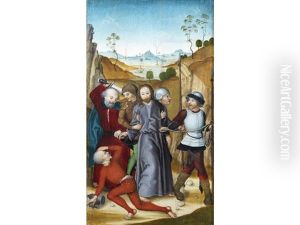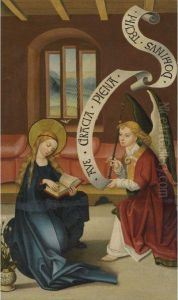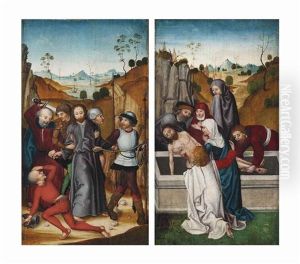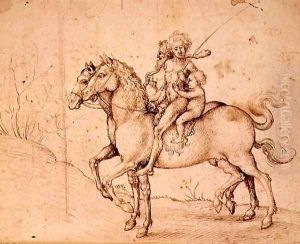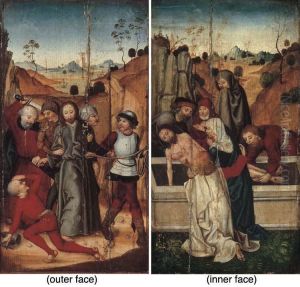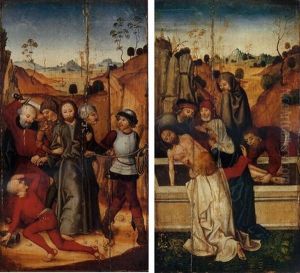Ludwig Schongauer Paintings
Ludwig Schongauer, also known as Louis Schongauer, was a notable German engraver and painter during the late Gothic period. He was born around 1440 in Colmar, which was then part of the Holy Roman Empire and is now in France. Schongauer was one of the most important and innovative early printmakers in Europe, and he is best known for his copper engravings, which were widely distributed and imitated by other artists.
Schongauer's father was a goldsmith, and this likely provided him with an introduction to the techniques of metalwork that he would refine in his engravings. He probably received his artistic training in the Upper Rhine area, possibly in the workshop of the leading painter Caspar Isenmann. After his training, Schongauer traveled to the Netherlands, where he may have been influenced by the work of Rogier van der Weyden, Dirk Bouts, and other Northern Renaissance artists.
His masterpiece is the series of engravings known as 'The Passion of Christ,' which consists of twelve plates and showcases his skill in depicting emotion and fine detail. Schongauer's engravings are characterized by their sophisticated compositions, delicate lines, and an emphasis on chiaroscuro, which was an innovative technique at the time for creating depth and volume on a two-dimensional surface.
Apart from his engravings, Schongauer also produced a smaller number of paintings, of which few survive. His most famous painting is the 'Madonna in the Rose Garden,' which is now housed in the Dominican Church in Colmar. As a painter, he was an important predecessor to Albrecht Dürer, who was greatly influenced by Schongauer’s engravings and who later visited Colmar in 1492, shortly after Schongauer's death.
Schongauer ran a workshop and had numerous students and followers, which helped disseminate his style. His influence extended beyond the borders of Germany and reached artists in Italy and across Europe. Ludwig Schongauer died in 1491 in Breisach, a town on the Rhine near Colmar. His legacy lived on through the widespread circulation of his prints and through the generations of artists who admired and learned from his work.
